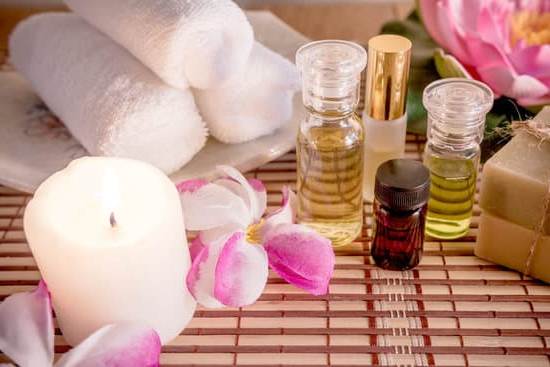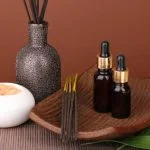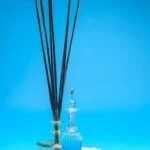Are you looking for a natural way to relieve stress and muscle tension? In this article, we will explore how to make aromatherapy heat wraps, a soothing and therapeutic option for relaxation and pain relief. Aromatherapy heat wraps offer the combined benefits of aromatherapy and heat therapy, providing a holistic approach to wellness. We will delve into the history of aromatherapy and heat therapy, as well as the numerous advantages that aromatherapy heat wraps can offer.
When it comes to creating your own aromatherapy heat wrap, choosing the right fabrics and materials is crucial for ensuring safety and effectiveness. In this section, we will provide valuable tips on selecting the best fabrics and materials for your homemade heat wrap. Understanding the importance of these choices will not only enhance the overall experience but also contribute to a successful outcome.
Selecting the appropriate essential oils is also an essential part of making aromatherapy heat wraps. Different oils offer various benefits, such as relaxation, pain relief, or rejuvenation. We will guide you through choosing the best essential oils for your specific needs and explain how they can enhance your therapy experience. Whether you are new to aromatherapy or a seasoned enthusiast, this section will provide valuable information on harnessing the power of essential oils in your homemade heat wrap.
Choosing the Right Fabrics and Materials
When it comes to creating your own aromatherapy heat wrap, choosing the right fabrics and materials is essential for ensuring the safety and effectiveness of the product. The first step in this process is selecting a suitable fabric for the wrap itself. It’s important to opt for a fabric that is soft, comfortable, and can withstand heat without causing any damage or releasing harmful substances when heated.
Tips for Selecting Fabrics
One popular choice for aromatherapy heat wraps is flannel, as it is a soft and breathable material that retains heat well. Additionally, natural fibers such as cotton or linen can also be great options for making the wrap comfortable against the skin. It’s best to avoid synthetic fabrics like polyester, as they may not be as breathable or safe when heated.
In addition to the fabric for the wrap, it’s important to carefully select the materials for creating the heat pack. This may include rice, flaxseed, or other fillers that can retain heat effectively. Ensuring that these materials are clean and free from any debris is crucial in order to prevent any potential issues when heating the pack.
Importance of Choosing the Right Materials
Selecting the right fabrics and materials is not only important for safety reasons but also impacts the overall effectiveness of the aromatherapy heat wrap. The chosen materials will hold not only heat but also fragrances from essential oils, so it’s essential to choose materials that can store and release these scents effectively during use.
By carefully considering these factors during the creation process, you can ensure that your aromatherapy heat wraps are both safe and beneficial in providing relaxation and pain relief.
Ultimately, taking careful consideration in choosing fabrics and materials will contribute greatly to the success of your homemade aromatherapy heat wraps. By prioritizing safety and effectiveness through mindful material selection, you can create high-quality products that provide comfort and therapeutic benefits for years to come. With these tips in mind, you’ll be on your way to crafting personalized aromatherapy heat wraps tailored to your preferences.
Selecting Aromatherapy Oils
When it comes to creating aromatherapy heat wraps, choosing the right essential oils is a crucial step in enhancing the overall experience. Aromatherapy oils have been used for centuries for their various therapeutic properties, and when combined with heat therapy, they can provide an exceptional way to alleviate stress, promote relaxation, and even relieve muscle tension. Here are some tips on selecting the best essential oils for your aromatherapy heat wraps:
- Consider the therapeutic benefits: Different essential oils offer different therapeutic benefits. For example, lavender oil is known for its calming and soothing properties, making it ideal for promoting relaxation and reducing anxiety. On the other hand, peppermint oil is often used to alleviate headaches and migraines due to its cooling and analgesic effects. Consider the specific purpose of your aromatherapy heat wrap and choose essential oils that align with those needs.
- Choose high-quality oils: When selecting essential oils for your heat wraps, opt for pure and high-quality products. Look for oils that are labeled as 100% pure and natural, as these are less likely to contain artificial additives or dilutions that may diminish their effectiveness.
- Experiment with fragrance combinations: While some essential oils work well on their own, blending different oils can create unique fragrance combinations that enhance the overall aromatherapy experience. For example, a blend of citrus oils like orange and lemon can create an uplifting and energizing scent, while a combination of eucalyptus and tea tree oil can offer respiratory support.
When creating your own aromatherapy heat wraps at home, take the time to carefully select essential oils that cater to your specific needs and preferences. By choosing the right oils, you can personalize your therapy experience and maximize the benefits of your homemade heat wraps.
Creating the Heat Pack
When it comes to creating aromatherapy heat wraps, the heat pack plays a crucial role in providing the therapeutic benefits of heat therapy and essential oils. Making the heat pack for your aromatherapy heat wrap is a simple and rewarding process that requires just a few materials and some easy steps. Here’s how to make aromatherapy heat wraps by creating the heat pack:
First, gather your materials, including a clean cotton fabric for the pack casing, flax seeds or rice as filling, and your chosen essential oils. Cut the fabric into a suitable size for your desired heat pack dimensions, leaving room for sewing.
Next, carefully sew the fabric together inside-out, leaving a small opening to fill with your chosen filling material. Once sewn, turn the fabric right-side out and fill it with flax seeds or rice. Add 5-10 drops of your selected essential oil to the filling and mix well.
Finally, carefully stitch up the remaining opening of the pack to secure the filling and essential oils inside. Your homemade heat pack is now ready to be used in creating your own personalized aromatherapy heat wrap.
| Materials | Instructions |
|---|---|
| Clean cotton fabric | Cut into desired size for pack casing |
| Flax seeds or rice | Use as filling material for the pack |
| Chosen essential oils | Add 5-10 drops to the filling material before sealing |
By following these simple steps in creating the heat pack for your aromatherapy heat wrap, you can enjoy the therapeutic benefits of this DIY project at home while customizing it according to your preferences and needs.
Adding Aromatherapy Oils
When it comes to creating aromatherapy heat wraps, adding essential oils is a crucial step in enhancing the therapeutic experience. Essential oils have been used for centuries for their various physical and emotional benefits, making them an excellent addition to heat packs. Here’s how to make aromatherapy heat wraps with the perfect combination of scents and effectiveness.
Choosing the Right Essential Oils
When selecting essential oils for your aromatherapy heat wrap, consider the desired therapeutic effect you want to achieve. For relaxation and stress relief, lavender and chamomile essential oils are popular choices. For pain relief, eucalyptus and peppermint essential oils can provide soothing effects. It’s essential to choose high-quality, pure essential oils to ensure maximum benefits.
Adding Essential Oils to the Heat Pack
Once you’ve selected your preferred essential oils, it’s time to add them to your heat pack. Depending on the size of your pack, typically 6-10 drops of essential oil are enough to infuse it with a pleasant fragrance and therapeutic properties.
To evenly distribute the scent, you can mix the essential oil with a carrier oil like jojoba or almond oil before applying it to the fabric. Be mindful not to oversaturate the heat pack with oil as it may cause skin irritation when in use.
Achieving Desired Level of Scent and Effectiveness
After adding the essential oil to your heat pack, allow it some time for the scent and therapeutic properties to infuse into the fabric. You can seal the pack in a plastic bag for a day or two before using it, as this will help intensify its aroma.
Additionally, if you find that the scent is too strong or weak when using your aromatherapy heat wrap, you can adjust by either adding more drops of essential oil or diluting it further with a carrier oil during future applications.
By following these steps for adding aromatherapy oils to your homemade heat wrap, you can create a personalized sensory experience tailored to your specific needs while enjoying all the benefits these natural essences have to offer.
Assembly of the Heat Wrap
Once you have created the heat pack for your aromatherapy heat wrap, it’s time to assemble the wrap itself. Here’s a simple guide on how to put it all together:
1. Choose the Fabric: Select a fabric for your heat wrap that is soft, comfortable, and can withstand heating in the microwave or oven. Consider using materials like cotton, fleece, or flannel for the outer layer of the wrap.
2. Measure and Cut: Determine the size and shape you want for your aromatherapy heat wrap based on your personal preference and intended use. Use fabric scissors to cut the chosen fabric into two equal-sized pieces.
3. Sewing or No-Sew Option: If you are handy with a needle and thread, you can sew the two pieces of fabric together, leaving one end open to insert the heat pack. Alternatively, you can use fabric glue or iron-on adhesive tape for a no-sew option.
4. Insert Heat Pack: Once you have your fabric assembled, carefully insert the heat pack into the opening of the wrap. Make sure it is secure and properly positioned within the fabric layers.
5. Seal Opening: If you opted for a sewn closure, carefully stitch up or secure the opening to ensure that the heat pack stays in place during use. For a no-sew option, make sure that any adhesive used is fully secure.
6. Optional Additions: Feel free to personalize your aromatherapy heat wrap by adding decorative elements such as buttons, ribbons, or embroidery to enhance its appearance and functionality.
By following these steps, you can easily assemble an aromatherapy heat wrap at home that meets your specific needs while also enjoying a personalized DIY project.
Now that you know how to make aromatherapy heat wraps from scratch from selecting materials to assembly tips here’s Ago Scent Instructions on uniquely presenting this self-care product as great gifts.
Using and Caring for Aromatherapy Heat Wraps
Aromatherapy heat wraps are versatile and can be used for various purposes, such as relaxation, stress relief, or to soothe muscle aches and pains. They offer a natural and effective way to enhance well-being and promote relaxation. These heat wraps can be easily made at home with the right materials and essential oils, allowing for customization according to individual preferences.
To make aromatherapy heat wraps at home, you will need to choose the right fabric and materials that are safe for heating. It is important to select fabrics that are microwave-safe and can withstand heat without causing any damage or emitting harmful fumes. Natural fibers like cotton or linen are good choices for the outer cover of the heat wrap, while muslin or flannel can be used for the inner pouch containing the heat pack.
When it comes to selecting the essential oils for your aromatherapy heat wrap, it is essential to consider their therapeutic properties and benefits. Lavender oil, known for its calming and relaxing effects, is a popular choice for promoting sleep and reducing anxiety. Eucalyptus oil can aid in relieving congestion and sinus pressure, making it great for colds or allergies.
Peppermint oil is invigorating and can help alleviate headaches and migraines. The choice of essential oils will depend on your personal preferences and what you intend to use the heat wrap for.
Conclusion
In conclusion, creating your own aromatherapy heat wraps can be a fulfilling and beneficial endeavor. There’s something truly satisfying about crafting a product that promotes relaxation, comfort, and well-being. By following the tips on choosing the right fabrics and materials, selecting the best essential oils, and carefully assembling the heat wrap, you can customize the experience to suit your specific needs.
The process of making aromatherapy heat wraps at home is not only cost-effective but also allows for a personal touch. You have control over every aspect of the creation, from the scent of the essential oils to the design and style of the wrap itself. This DIY approach gives you the freedom to tailor the heat wrap to your preferences and requirements.
We encourage our readers to give it a try and experience firsthand how to make aromatherapy heat wraps. The benefits are numerous, including relaxation, stress relief, pain management, and overall enhancement of well-being. We also invite you to share your experiences with others – whether it’s through social media or by giving a homemade heat wrap as a thoughtful gift. Embrace the journey of creating and using aromatherapy heat wraps as part of your self-care routine.
Frequently Asked Questions
How Do You Make a Scented Heat Pack?
To make a scented heat pack, start by choosing a fabric and cutting it to your desired size. Sew three sides together, then fill the pack with rice, flaxseed, or barley. Add a few drops of essential oil before sewing the final side closed.
What Is the Best Filling for Heat Bags?
The best filling for heat bags depends on personal preference and needs. Some popular options include rice, flaxseed, barley, cherry pits, or oatmeal. These fillings can hold heat well and provide comfort for sore muscles or cramps.
How Do You Make Homemade Heat Compress?
To make a homemade heat compress, fill a clean sock with uncooked rice and tie a knot at the open end. Heat the compress in the microwave for 1-2 minutes and check the temperature before applying it to the affected area. It’s a simple and effective way to create your own heat therapy at home.

Are you looking for a natural way to improve your health and wellbeing?
If so, aromatherapy may be the answer for you.





